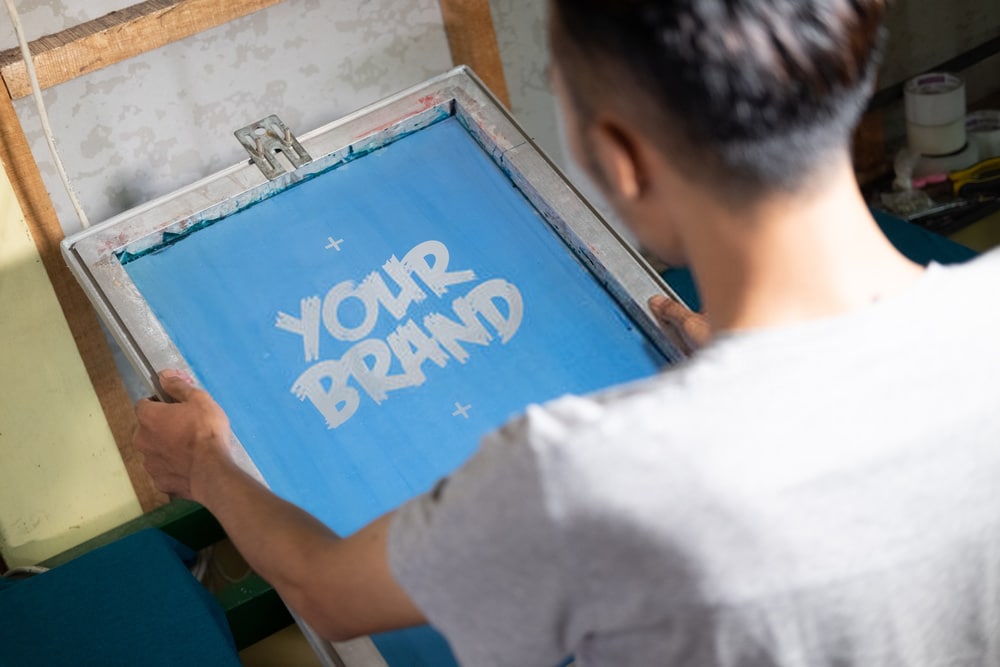What is Screen Printing in Art? Screen printing is a method of applying ink to a surface by forcing it through a mesh screen. A stencil is created by making some sections of the screen resistant to printing ink. This prevents the printing ink from going through the screen. The printed image is created by the ink that flows through.
A printing screen is made up of a thin mesh fabric pulled tautly and fastened to a metal or wooden frame.
The purpose of original prints is to produce the desired image from the artist’s plate block stone or silkscreen so that the artist can use it in his or her work. Original prints may be created by hand and printed by hand.
This article is about what is screen printing in art.
Screenprint Art
To create halftone graphics, a novel image reproduction process known as creative screening uses screen elements created by the user. High-quality graphic design can be developed by interacting with the image to be reproduced and the screen shapes.
During the screen printing process, ink is pushed through a filter membrane onto a surface. In order to make screens impenetrable to printing ink, some sections of the screen must be rendered impermeable so that ink cannot travel through them. The ink going through creates a picture.
Process
- Transparencies are designed by applying a thin layer of photosynthesis emulsion through a metal that is coated with a thin layer of emulsion with a scoop coater.
- The pattern is placed against the screen when the paint has dried.
- The screen is then exposed to ultraviolet light in an exposure unit. The design inhibits UV light from hardening the emulsion around the image when the exposure unit is turned on.
- In this case, the design is left on the screen because of the leftover soft emulsion covering it.
- Once the screen is ready, it is attached to a board or screen printing table with pivots at the top and holes in the surface that allows a vacuum to keep a sheet of paper in place during printing. The process of ‘’flooding the screen’’ involves applying a thick bead of ink along the top of the inside of the screen and then pulling it evenly across the image with a scraper
- The ink is then pushed through sections of the screen not covered by the stencil with another pass of the scraper. The resulting perception follows the matrix orientation.
- If the printmaker has to use more than one color, he or she must repeat the process with each colour using a separate stencil. The printer must take precautions to ensure that the sheet of paper and the screen are properly registered in order to maintain the colours of composition aligned.
Turn your screen into turns
- Get the artwork ready, draw your artwork for this assignment with a thick black marker. It seems to work best with artwork that has thicker lines.
- Scanning your artwork to your computer is the next step
- The image should now be opened in adobe illustrator as the third step
- Cut out the vinyl design and transfer it to the screen.
- Screen printing is the final process after this your painting is ready.
Silkscreen in art
- An ink-blocking stencil on a screen is used in this printmaking process to allow ink to pass through to a printing surface selectively as it is wiped across. Screen printing is also known as silk printing.
- Every print in a series is considered an original work of art rather than a replica in printmaking. Ink is printed through stencils that are stretched over a screen to support a porous fabric mesh in this stenciling procedure.
Conclusion
Everyone likes artwork. In this era, people are closely attached to art. It seems very beautiful and liked by everyone. During the screen printing process, ink is pushed through a mesh screen onto a surface. In order to make the screen impenetrable to printing ink, some sections of the screen must be rendered impermeable so that ink cannot travel through them. The ink going through creates a picture. All this is about screen printing in art. It makes your paintings very beautiful and makes them attractive. I hope you will like this article
